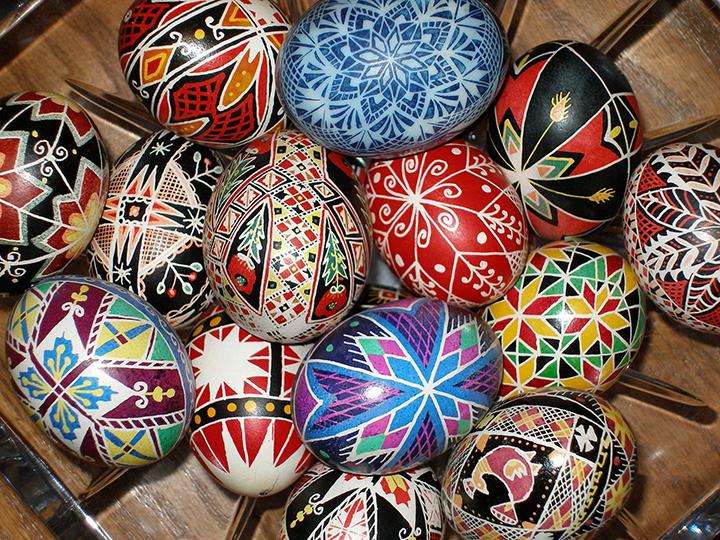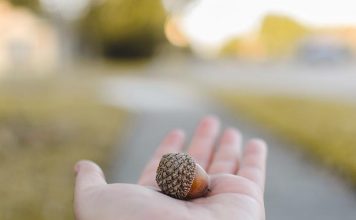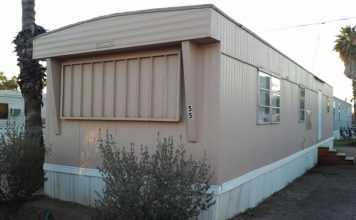| Issue #86 • March/April, 2004 |
There are usually two problems with raising chickens. a) You have too many eggs, or b) you aren’t getting enough eggs to warrant shelling out the bucks for their feed. And it seems like “b” is the more usual of the two problems. Now while you can always say that you have a better quality egg than you get at the grocery store, and that you know your chickens are raised humanely, there is still the money problem to worry about. It is time to help those biddies pay for their feed and housing, and here is how.
say that you have a better quality egg than you get at the grocery store, and that you know your chickens are raised humanely, there is still the money problem to worry about. It is time to help those biddies pay for their feed and housing, and here is how.
My suggestion is to learn Pysanki. Pysanki is the art of decorative egg dying, practiced in the Ukraine and other parts of the old world. A design is drawn in beeswax on the egg with a tool called a Kistka, which is a tiny copper funnel on the end of a stick for heating and drawing with the wax. When you have the first part of your design drawn, you dip your egg in your dye bath, lightest color first. Whatever part of the egg is not touched with wax will pick up the color of the dye. After the first coat is dry, cover more of the design with beeswax and dip it in the next dye bath. When your design is complete you remove the wax by holding the egg to the side of a candle flame allowing the wax to melt off. Wipe it gently with a paper towel. Let your egg dry on a tack board and then spray your work of art with shellac.
The tools needed for this craft are few and inexpensive: a candle, a kitska, the beeswax, dye and dye pots, white vinegar, a tack board, and some paper towels. Some people also use an egg blowing tool, but if you use this tool do not use your eggs for cooking afterwards, as the tool is impossible to clean and there is the chance of dangerous bacteria and germs growing inside. If you wish to use the egg yoke and whites, simply poke a small hole in the top of the egg with a tack, and another larger hole in the bottom, and blow the yoke out into a bowl. Make sure that you let the egg dry out after blowing for a day or two before you begin working on it or you will have egg yoke in your dye.
use an egg blowing tool, but if you use this tool do not use your eggs for cooking afterwards, as the tool is impossible to clean and there is the chance of dangerous bacteria and germs growing inside. If you wish to use the egg yoke and whites, simply poke a small hole in the top of the egg with a tack, and another larger hole in the bottom, and blow the yoke out into a bowl. Make sure that you let the egg dry out after blowing for a day or two before you begin working on it or you will have egg yoke in your dye.
If you sell two or three finished eggs at $12 a piece, which is very reasonable, you have made back the cost of your tools. If you sell another one at the same price, that is almost two bags of chicken feed. While you probably won’t get rich doing this, you will at least be earning some of your chickens’ feed cost. Imagine selling a dozen eggs for $12.00 a piece when most farms sell a dozen eggs for a dollar. Possible markets for your eggs would be farmers markets, consignment shops, and holiday craft fairs. Another possibility would be to create a website to display your eggs and have them available for ordering.

Here is a breakdown of the costs of getting started in pysanki.
-
- The kitska: $1.99 to $4.00 for candle heated models. You may wish to have two or three as they come in fine, medium, and large. Electric Kitskas cost as much as $60, and come with removable heads so that you can change size as needed.
- A candle: I use cheapo votive candles that you can get at Walmart. Make sure that there is no lead wire in the wick.
- Beeswax: comes in black and yellow. I prefer the black. It costs me $1.19 a square.
- White vinegar: $1.99. It is used in mixing your dyes.
- Dye: I pay about $0.79 cents for Pysanki dye, but I also use wool dye. Any protein dye will work. I’m also going to try Kool-Aid since it takes so well in wool. If using toxic dyes please wear latex gloves for safety.

- Paper towels: About $2.00 a roll.
- A tack board: This is simply a piece of cardboard with tacks poked through to support your eggs for drying. Tacks cost about $1.75 a package and cardboard can be found free.
- Dye pots: I use mason jars with screw on lids. This way you can keep using your dye bath over a period of time until it is exhausted. Figure about $6.00 for a box of new jars and much less for used.
- Spray shellac: About $4 or $5 for a can of fancy spray for craft purposes.
Your total? To get started in pysanki following this list, you will spend about $25.89. (This figure is based on getting two of the cheaper kitskas or one of the $4.00 ones and 5 packets of egg dye.)
When I am done with the eggs it is nice to cap over the holes with silver or gold filigree caps and a bit of glue. The caps I get cost about $1.19 for a bag of 14. You can also buy similar style hangers and use the eggs as Christmas decorations, or you can place the eggs in a fancy stand for display. Wherever you decide to display them, remember to keep them out of direct sunlight as the dye will fade quickly.
Most of the stuff that you need can be found at the grocery store: vinegar, tacks, candles, and paper towels, etc. For the more exotic things like the kitska, dyes, and beeswax, try your local craft stores. If they don’t have them, they may be interested in ordering them in for you. And if you learn this craft well, you may even be asked to give classes.














